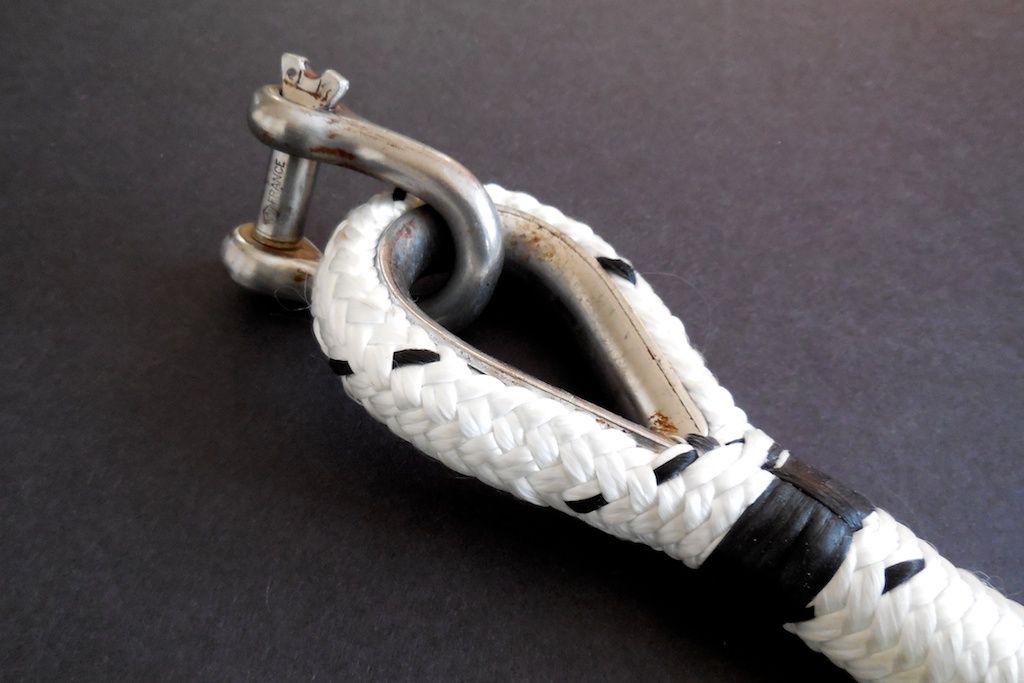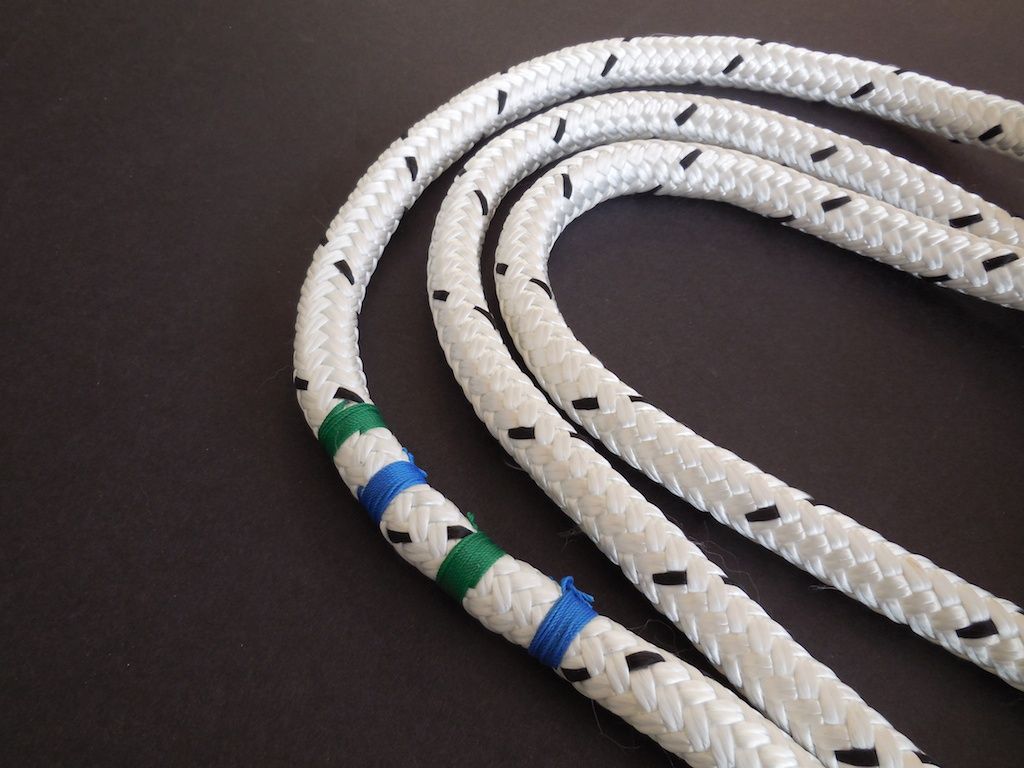New Secondary Anchor Rode
--Blog post written by Bob
A good anchor system is necessary if we find ourselves anchored in the Bahamas during strong winds, usually from the North during the winter.
Seriously, our anchor system should be designed to safely withstand loads of 2400 lbs. (for a 40 foot long boat) according to ABYC standards (intended for the design of the attachment point on the boat for use with a storm anchor).
A good anchor system is necessary if we find ourselves anchored in the Bahamas during strong winds, usually from the North during the winter.
Seriously, our anchor system should be designed to safely withstand loads of 2400 lbs. (for a 40 foot long boat) according to ABYC standards (intended for the design of the attachment point on the boat for use with a storm anchor).
Anchor Rode
The "anchor rode" forms the connection between the boat and the actual anchor. The anchor rode may be all chain (most conservative), a combination of rope and chain (most practical), or in some rare cases, all rope (not recommended).
The purpose of the chain is to keep the anchor rode close to the seabed so that the force on the anchor is nearly horizontal--this makes the anchor dig in deeper and have more holding power. With a rope/chain rode, the length of the chain should be about one boat length as a general rule--I'm not sure where this general rule came from (or if it's waterline length or overall length) but it is reasonable, based on the boat's nominal length of 38 feet.
I've decided to use a total rode length of 235 feet, with 35 feet of this total length being chain (slightly less than our boat's nominal length). This arrangement will allow us to anchor in water depths ranging from 6 to 33 feet, while maintaining a 7-to-1 scope. (Actually in deeper water, the scope can be safely reduced and in storm conditions it is desirable to use more than 7-to-1 scope.)
Anchor Chain
Since I have established the design load based on the ABYC recommendations for the attachment point to the boat for a storm anchor, the chain should be selected on the same load. (The safe working load, SWL, is 1/4 of the ultimate tensile strength of the chain.) My alternatives are as follows:
1/4-inch G4 Hi Test Chain - 2,600 lbs. SWL (25.5 lbs weight for 35 feet)
5/16-inch G4 Hi Test Chain - 3,900 lbs SWL (38.2 lbs weight for 35 feet)
3/8-inch G3 Proof Coil Chain - 2,650 lbs SWL (54.3 lbs weight for 35 feet)
I can achieve 108% of my design load using 1/4-inch G4 Hi Test chain and save 28.8 lbs. of weight when compared to the 3/8-inch G3 Proof Coil Chain. Even though I am saving weight, it should be clarified that the maximum weight I will be lifting will be the anchor's weight (45 lbs.) plus 0.73 lbs./foot of water depth. In other words in 10 feet of water, the maximum weight to be lifted will be 52.3 lbs.
,
Anchor Rope
I've been watching eBay for deals on anchor rope. I found 5/8-inch double braid nylon for $65/100 feet (or $0.65/foot) with a strength of 13,500 lbs. Prices at local marine stores range from $2 to over $3 per foot for similar rope. I have always been cautious about so-called "deals" on eBay but the 5/8-inch nylon rope really seems to be a good deal and it provides a safe working load of 3,375 lbs (incorporating a factor of safety of 4)--40% higher than the ABYC recommended load. The fact that it needs an eye splice may reduce the strength an additional 10 to 15%. (The rope is white with a black tracer and was manufactured last year for purpose as pulling cable rope.) I hit the "buy it now" link.
 |
| Eye Splice in New Anchor Rope with Stainless Steel Thimble and Shackle |
The new rope arrived about a week later. The same afternoon that it arrived I took it over to the rigging shop at my local West Marine store to have the eye splice made. One of the people in the store took a look at the very solid core of the rope and said they didn't think it could be spliced but they would have Julian (the rigger) take a look at it. As I was about to contact the eBay seller about the problem (I was going to return the rope), Julian called and said he had to "beat it into submission" but it is spliced and I can come pick it up. The eye splice cost only $20.
If the rigger was not able to splice this rope, I would have ended up paying for the rope I have plus another rope at a higher price from a local marine store. A word of caution to anyone else buying rope on eBay--you may have an issue with splicing.
 |
| Four Colored Bands Equals 120 Feet |
With the thimble in place, I was able to mark off intervals of 30 feet, starting the first set of brightly colored bands at 25 feet from the thimble to make 60 total feet (25 + 35 feet of chain = 60 feet) of anchor rode for the first two-band marking. Adding an additional band every additional 30 feet (with the last set of 7 bands at 210 total feet) completes the marking system.
In use, someone can quickly count the number of brightly colored bands on the rode at any given point and multiply by 30 to get the length of anchor line.
The total cost of this project was $320--of course, this involves using our existing Bruce anchor.
Thanks for following our blog!
Thanks for following our blog!
No comments:
Post a Comment